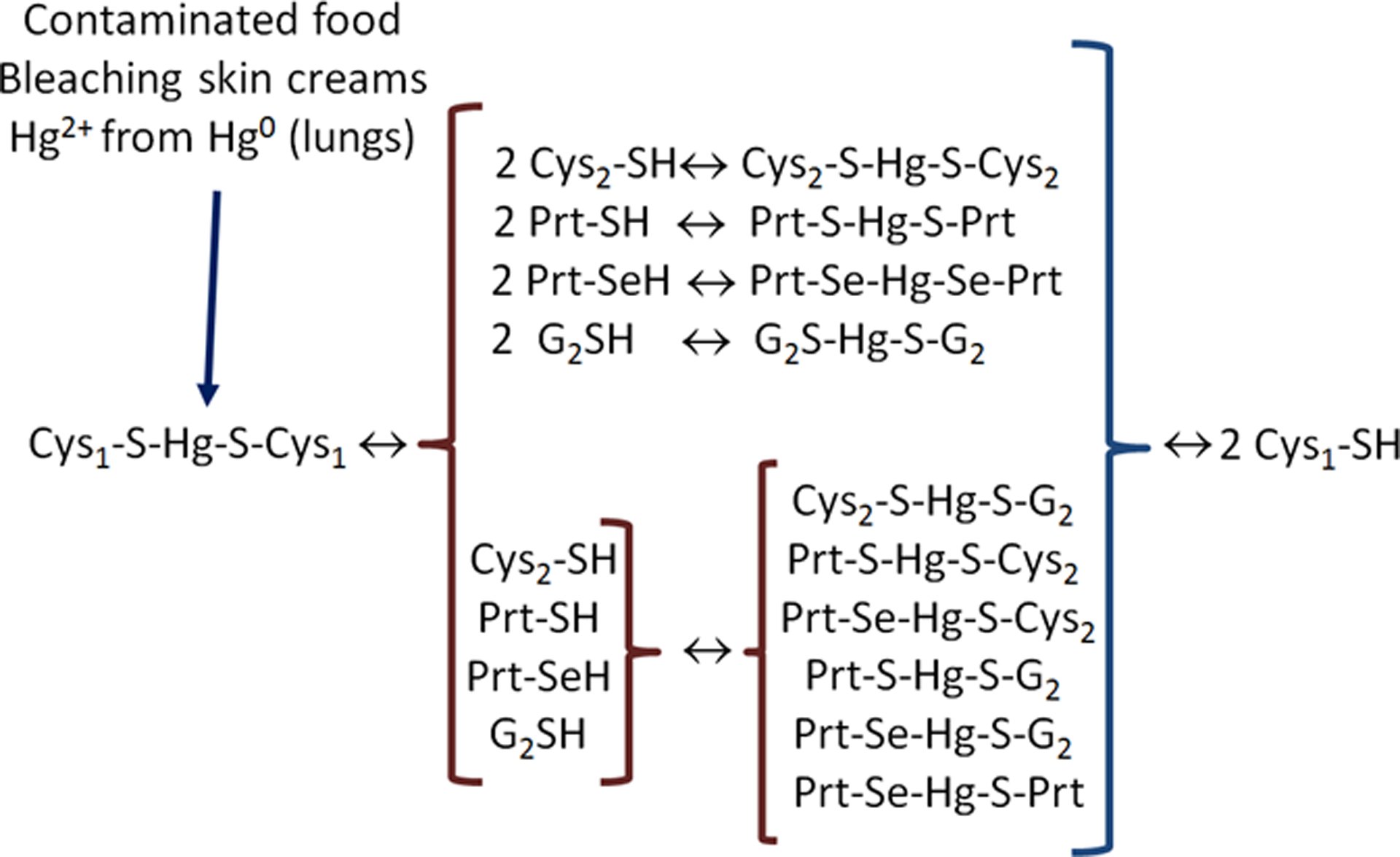Figure 5–

The fate of Hg2+ from the diet, bleaching skin creams and those oxidized from Hg0 absorbed in the lungs. After entering the body, any free Hg2+ will rapidly react with free thiol groups. Here the low molecular mass thiol-containing molecules (LMM-SH molecules) are represented by cysteine (Cys1-SH, Cys2-SH or complexed with Hg2+ and other organic groups represented by G2S−, Prt-S− or Prt-Se−). The complex Cys1-S-Hg-S-Cys1 can be absorbed from the intestinal tract and transported in the blood to the main target tissue (i.e., the kidney). (The molecular basis of why the kidney is the target organ of Hg2+ is elegantly reviewed in Zalups 2000). The reactions represented here can involve only one new thiol group (for instance, only one Cys2-SH can react with the complex Cys1-S-Hg-S-Cys1 forming Cys2-S-Hg-S-Cys1 and Cys1-SH as products and this applies to all the other thiols and complexes depicted in Figure 3.
